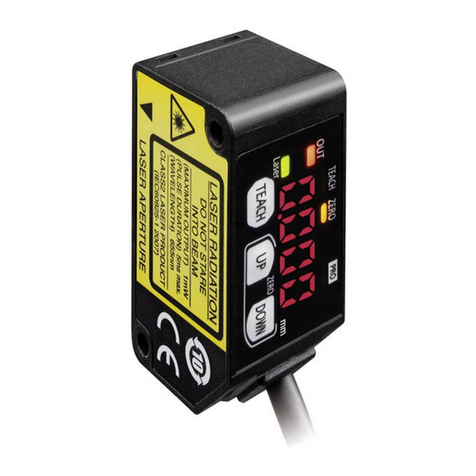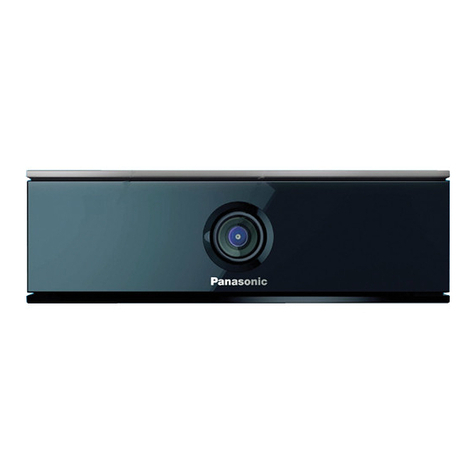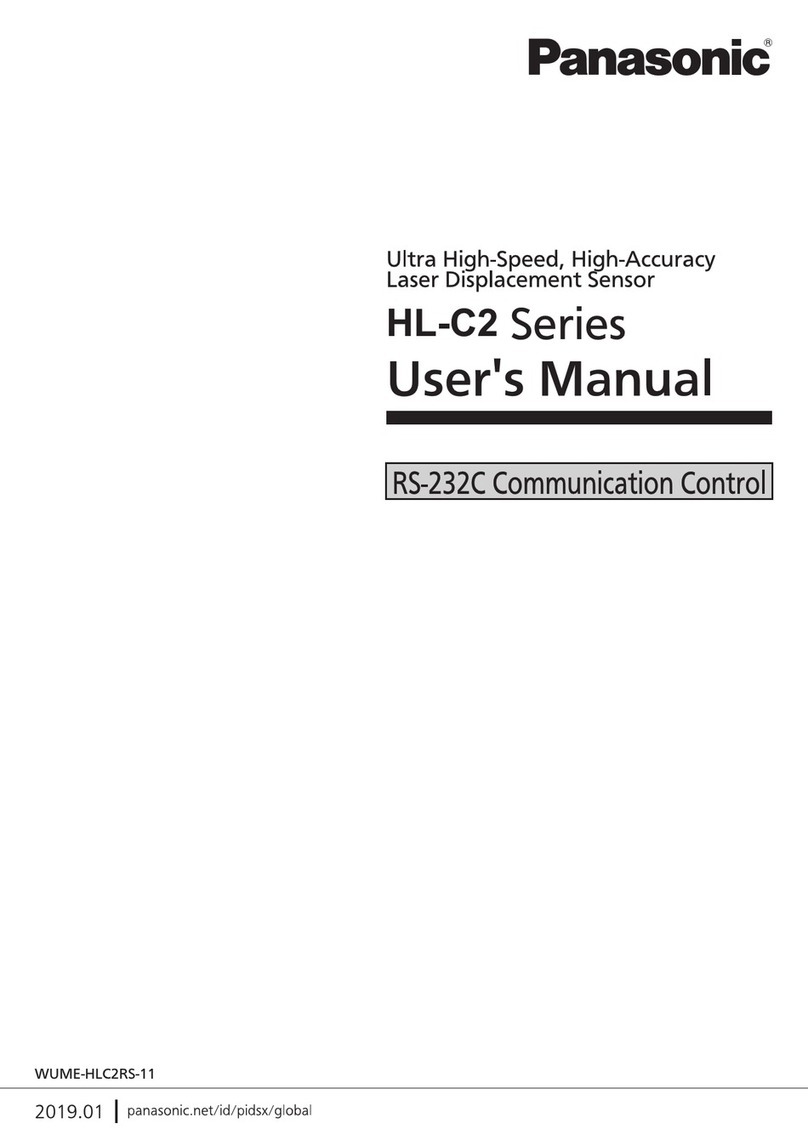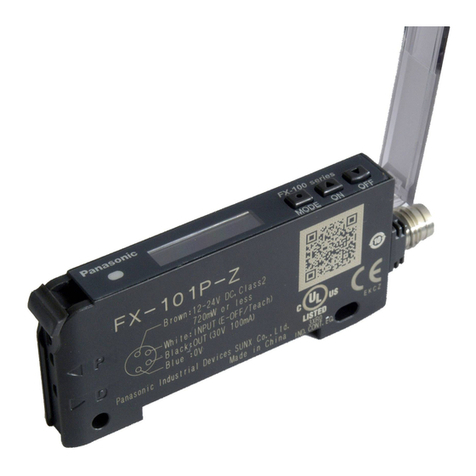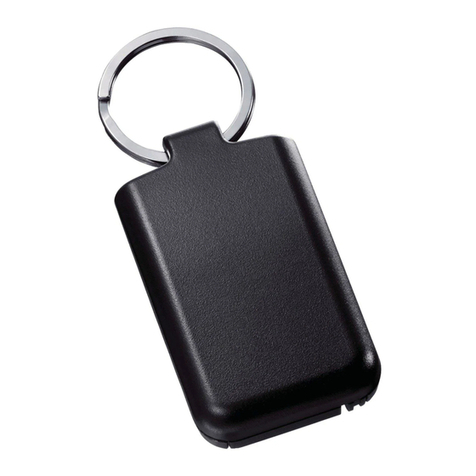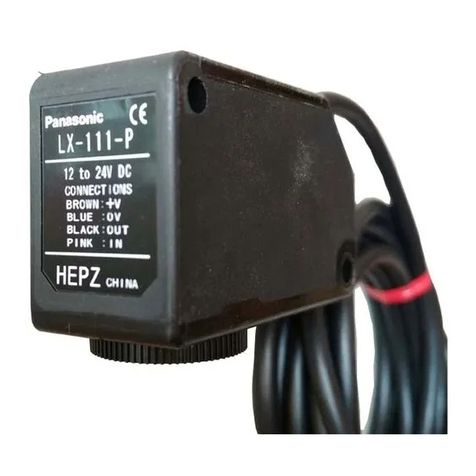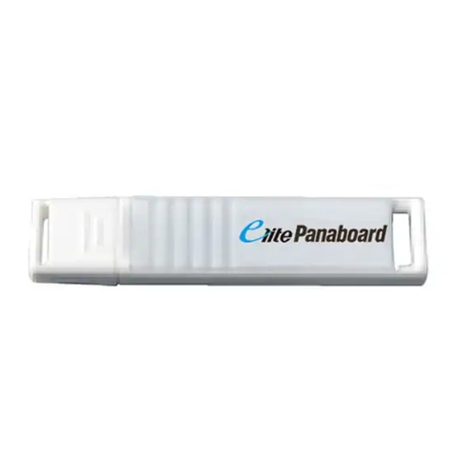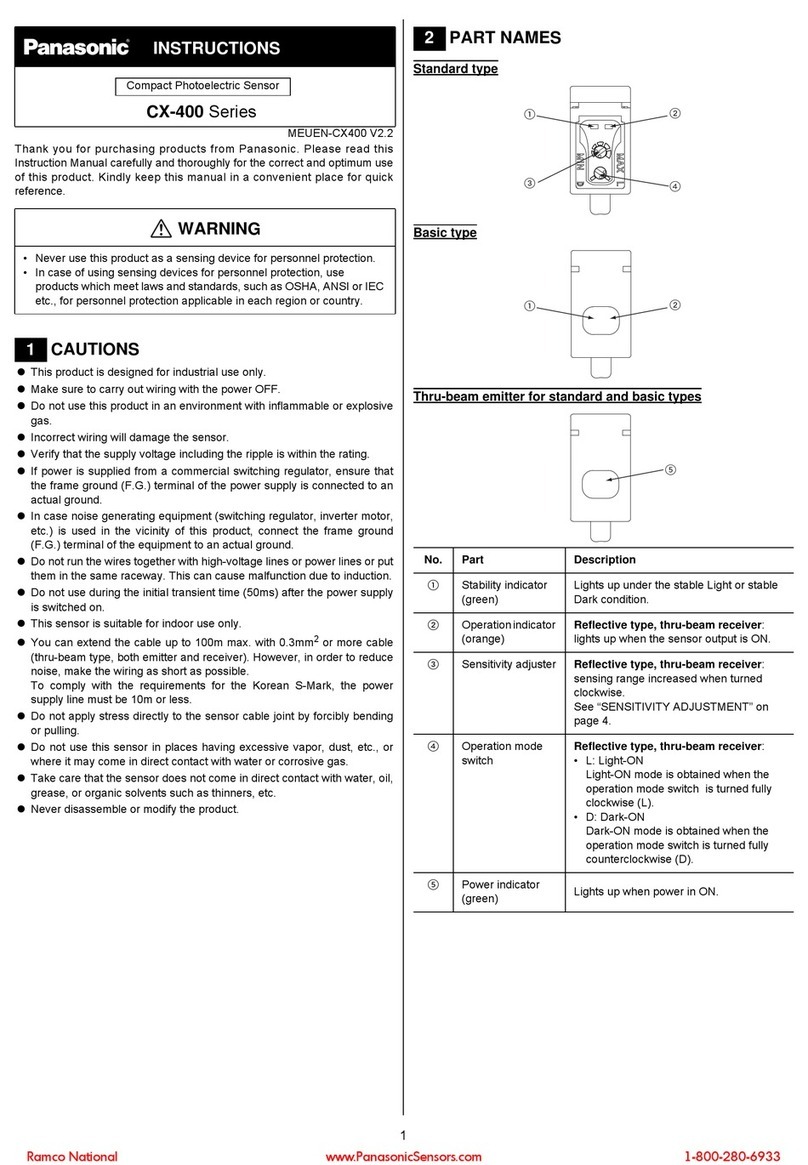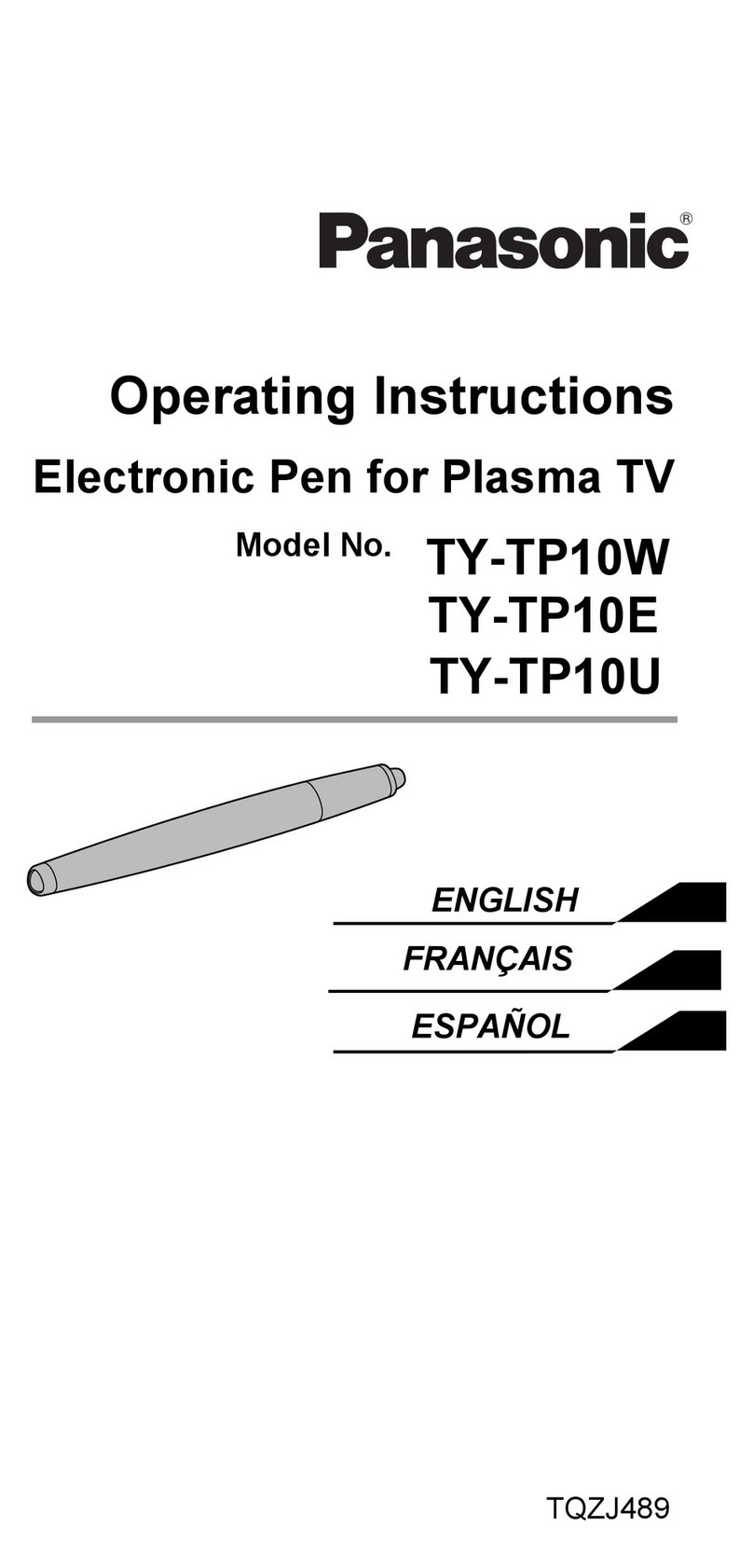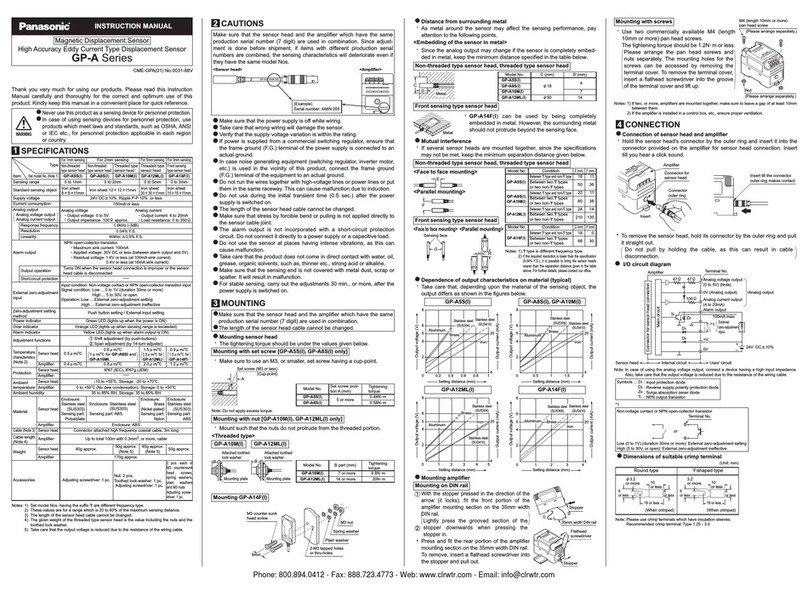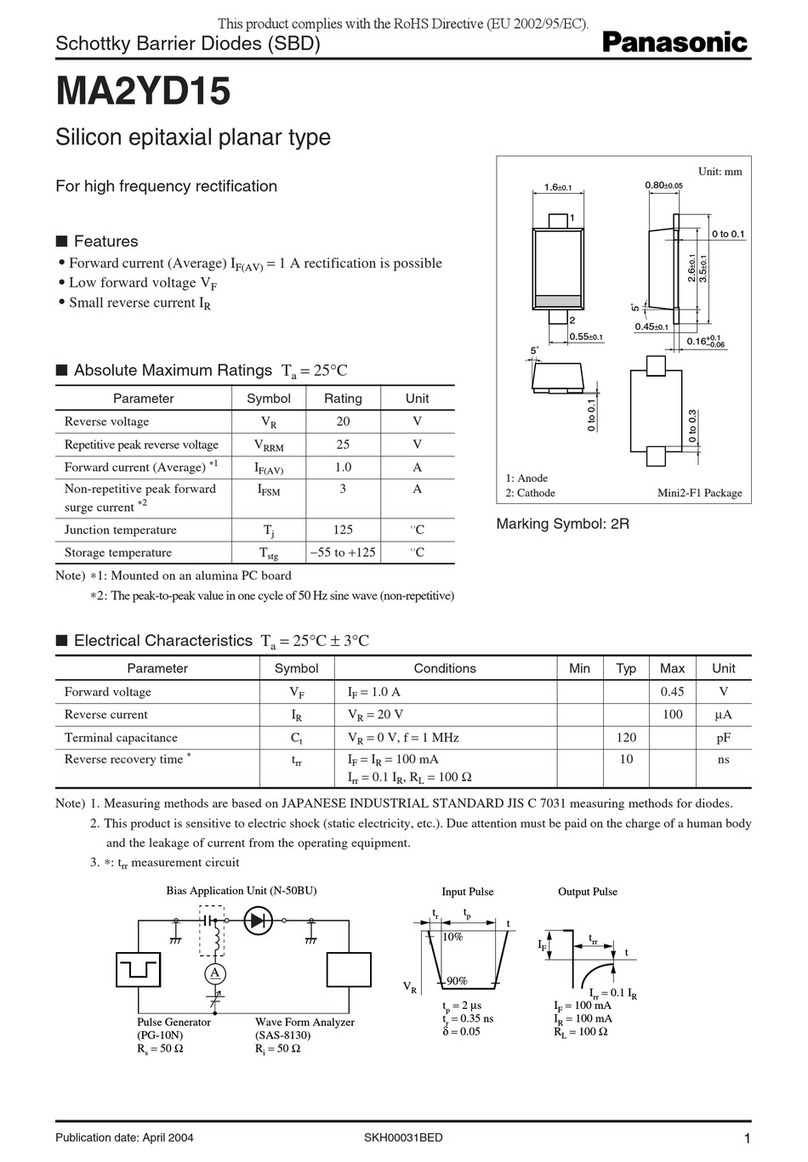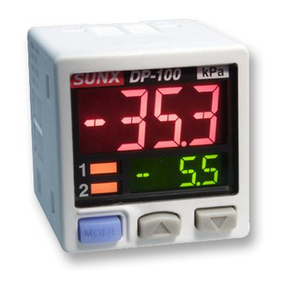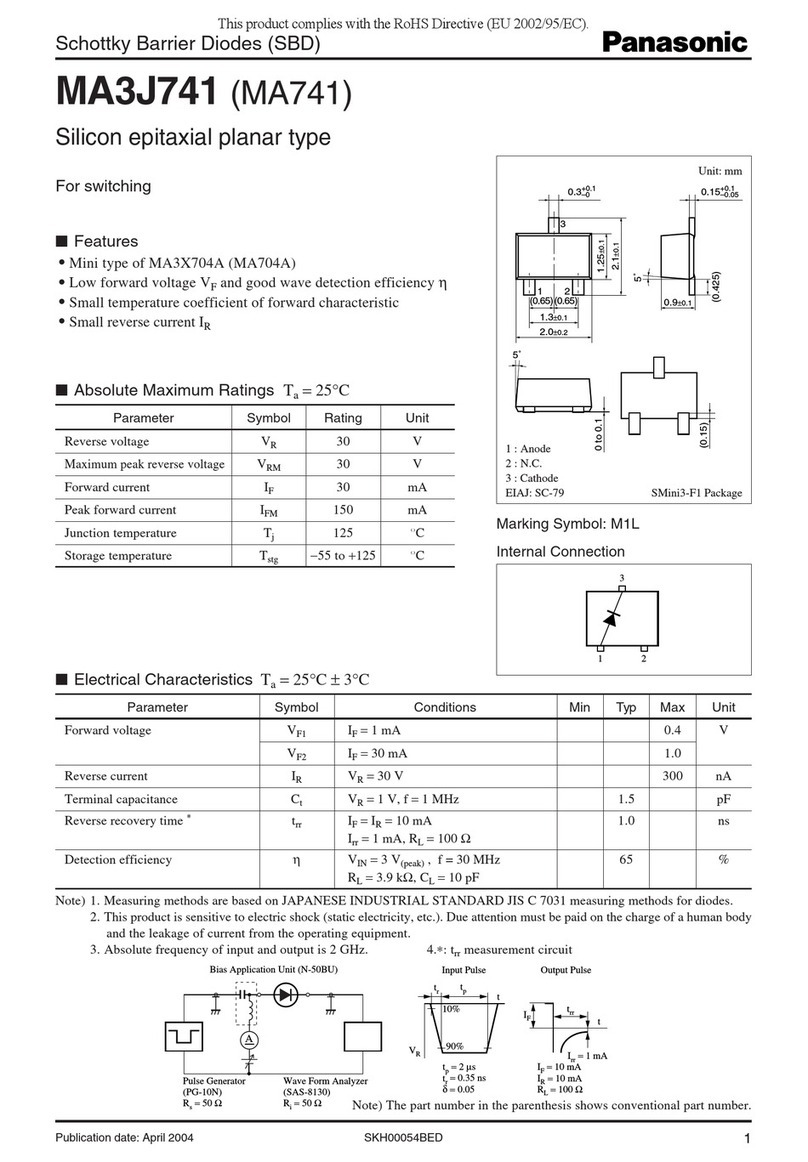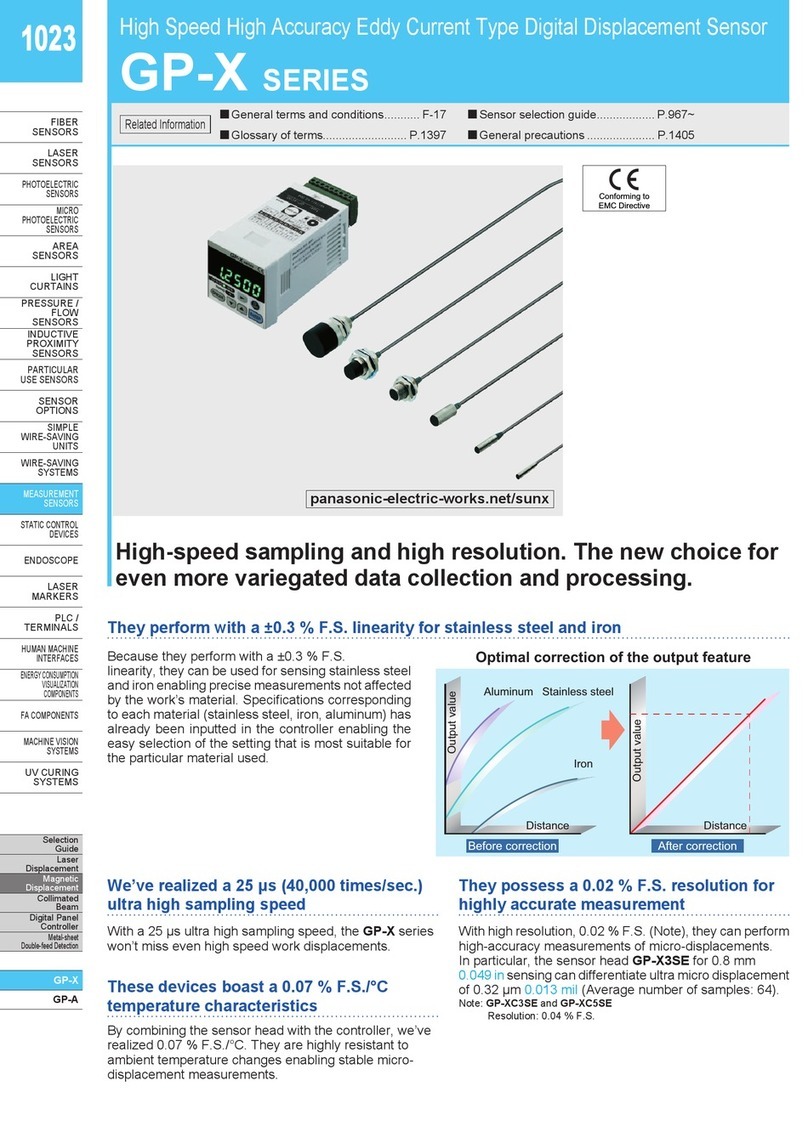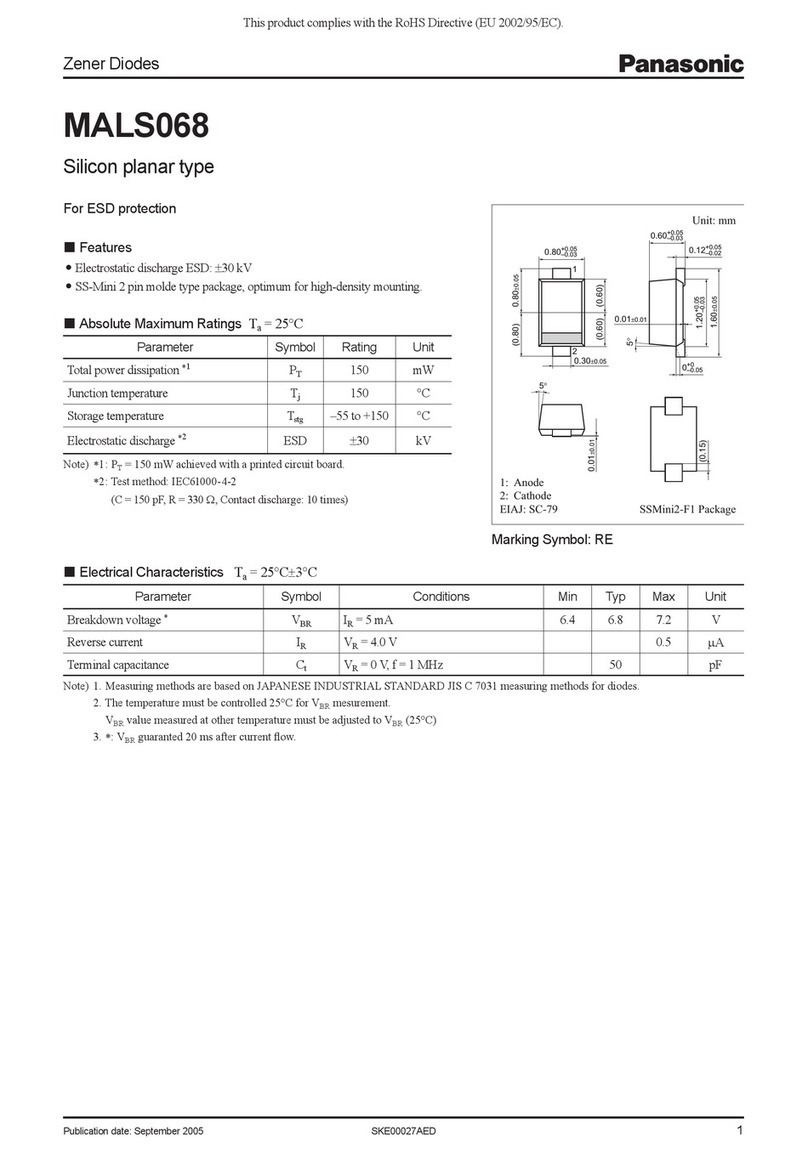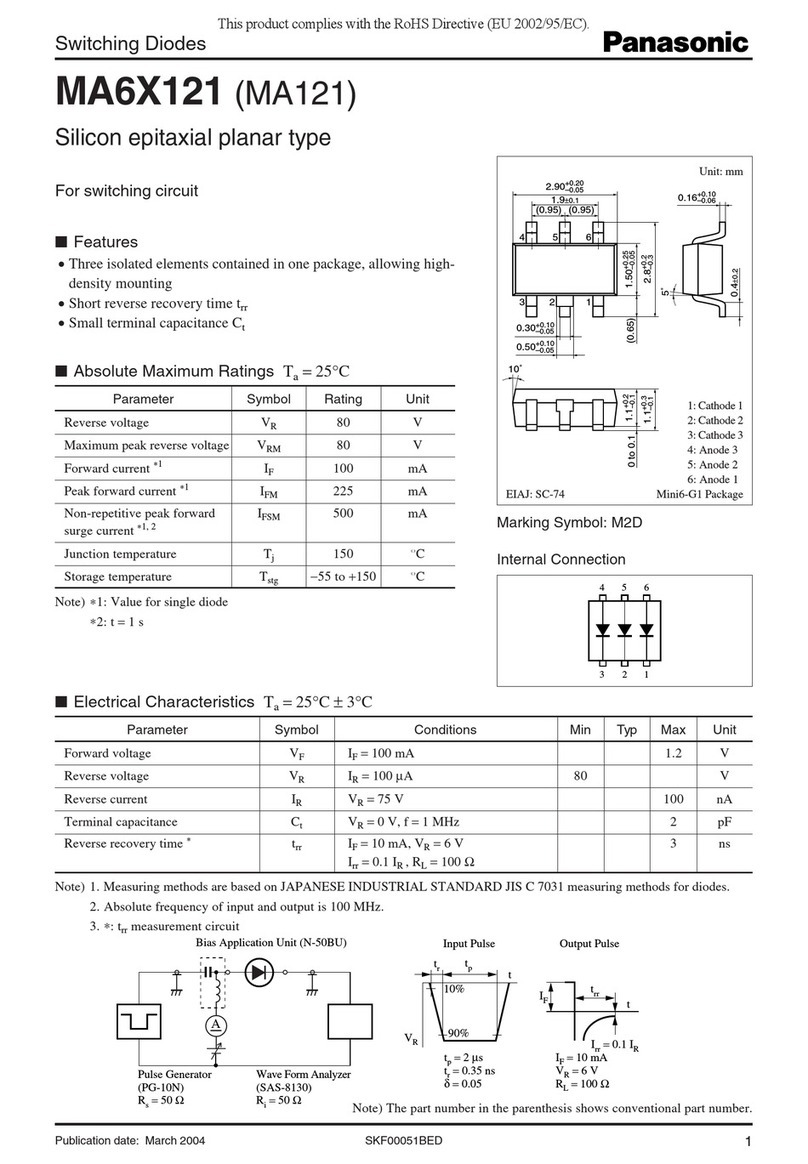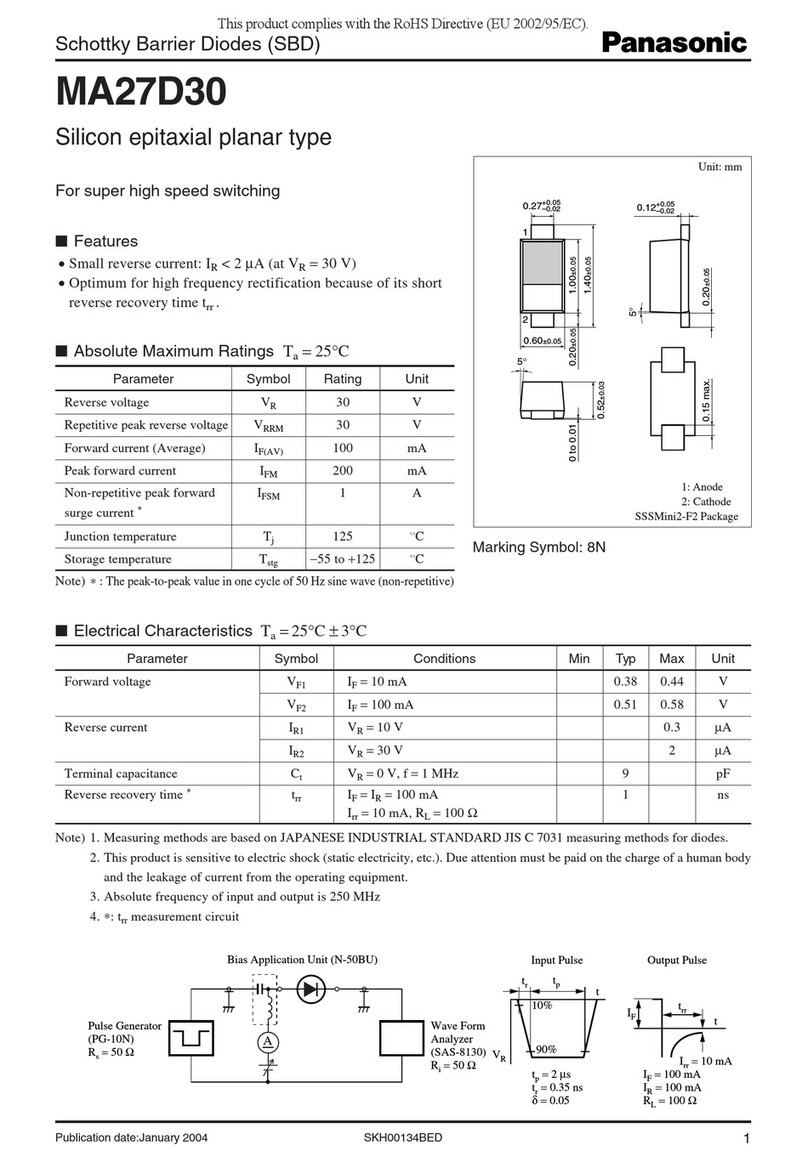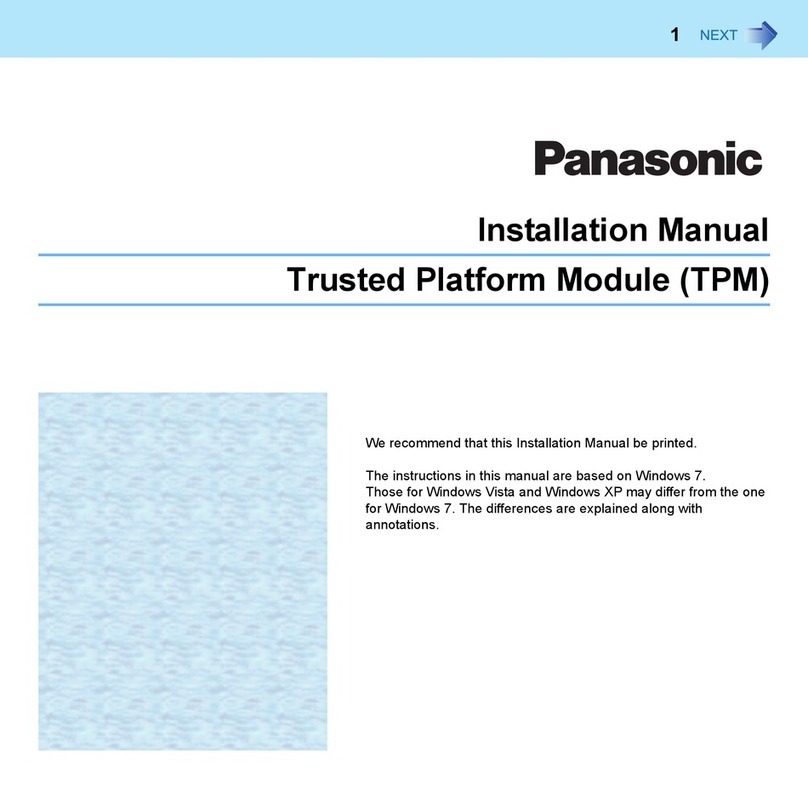
5SPECIFICATIONS
Type
General purpose High precision
Standard type Low measuring
force type Standard type Low measuring
force type
Model No. HG-S1010 HG-S1010R HG-S1110 HG-S1110R
Position detection method Optical absolute linear encoder method
Measurement range (Note 2) 10mm
Stroke (Note 2) 10.5mm or more
Measur-
ing force
Downward
mount
1.65N or less
1.1N (Note 3)
0.35N or less (Note 4)
0.3N (Note 3, 4)
1.65N or less
1.1N (Note 3)
0.35N or less (Note 4)
0.3N (Note 3, 4)
Upward mount 1.35N or less
0.85N (Note 3)
0.12N or less (Note 4)
0.05N (Note 3, 4)
1.35N or less
0.85N (Note3)
0.12N or less (Note 4)
0.05N (Note 3, 4)
Side mount 1.5N or less
0.95N (Note 3)
0.25N or less (Note 4)
0.2N (Note 3, 4)
1.5N or less
0.95N (Note 3)
0.25N or less (Note 4)
0.2N (Note 3, 4)
Resolution 0.5µm 0.1µm
Indication accuracy (P-P) • Full range: 2.0µm or less
•
Limited range: 1.0µm or less (any 60µm)
• Full range: 1.0µm or less
•
Limited range: 0.5µm or less (any 60µm)
Hot swap function Incorporated
Protective structure IP67 (IEC) (Note 5)
-
IP67 (IEC) (Note 5)
-
Ambient temperature -10 to +55°C (No dew condensation or icing allowed), Storage: -20 to +60°C
Ambient humidity 35 to 85% RH, Storage: 35 to 85% RH
Mechanical life (Note 6) 100 million times or more (reference value)
Tip deviation amount 35µm (typical value)
Grounding method Capacitor grounding
Material Body: Zinc, Holder: Stainless steel, Spindle: Tool steel
Probe: Ceramic, Rubber bellows: NBR (black)
Weight (main unit only) Approx. 80g
Notes:1)Measuredatanambienttemperatureof+20°C,unlessotherwisespecied.
2) 5 to 10mm range when HG-S□R is mounted in upward mount.
3) Typical value near center of measurement.
4) Standard state without the rubber bellows.
5) Excludes damage and deterioration to the rubber bellows due to external causes.
6) Typical value in a clean environment in which there is no contact with liquids such as water or oil, and no set-
tling of particulate matter.
When the HG-S□R is installed in the upward orientation, 4 million times (typical value).
6CAUTIONS
The special sensor head HG-S□ is designed to be used with the controller
HG-SC□.Ifusedwithotherthanthespecialsensorheadoption,thespecications
will not be met and product malfunctioning or damage may occur.
●This device has been developed / produced for industrial use only.
●Donotusethisproductoutsidetherangeofthespecications.Riskofanaccident
and product damage. There is also a risk of a noticeable reduction of service life.
●Deviations may occur in the measured value at the bottom dead point. Do not use
the bottom dead point as a standard.
●Do not wire in parallel with a high-voltage line or power line, or run through the
same conduit. Risk malfunctioning due to induction.
● Verifythatthesupplyvoltageuctuationsarewithintherating.
●If power is supplied from a commercial switching regulator, ensure that the frame
ground (F.G.) terminal of the power supply is connected to an actual ground.
●Do not use during the initial transient time after the power supply is switched ON.
●
Do not apply stress such as excessive bending or pulling to the extracted part of a cable.
●This product is suitable for indoor use only.
●Avoid dust, dirt, and steam.
●
Do not use this sensor in places where it may come in contact with corrosive gas, etc.
●
Ensure that the product does not come into contact with organic solvents such as thinner.
●Ensure that the product does not come into contact with strong acid or alkaline.
●Ensure that the product does not come into contact with oil or grease.
●
Thisproductcannotbeusedinanenvironmentcontainingammableorexplosivegases.
● Performancemaynotbesatisfactoryinastrongelectromagneticeld.
●This product is a precision device. Do not drop or otherwise subject to shock. Risk
of product damage.
●Never remove the standard rubber bellows except for replacement.
Riskofproductdamageduetoinltrationbydust,water,orothercontaminants.
●When the product becomes unusable or unneeded, dispose of the product appro-
priately as industrial waste.
●Never attempt to disassemble, repair, or modify the product.
7MAINTENANCE
How to replace the probe
●
Always secure the spindle to prevent rotation before replacing the probe. Risk of
product damage if an excessive torque (0.2N·m or more) is applied to the spindle.
●If the rubber bellows is damaged or deformed during probe replacement, the
specicationsoftheprotectivestructuremaynotbesatised.
1. Turn the probe screw in the direction of the arrow and remove the probe from the
spindle. When turning the probe screw, hold the cut face of the spindle with the
provided sensor head fastening wrench to prevent the spindle from turning.
Hold the sensor head fastening wrench in place, and turn only the probe.
Sensor head
fastening wrench
(Accessory)
Probe
Turn
2. Attach the new probe to the spindle. The tightening torque
should be 0.4N·m or less. Make sure that the probe does
not come OFF.
When turning the probe screw, hold the cut face of the
spindle with the provided sensor head fastening wrench to
prevent the spindle from turning.
Hold the sensor head fastening wrench in place, and turn
only the probe. Turn
3.
After attaching the probe, wipe the spindle with absolute alcohol to remove any dirt.
How to replace the rubber bellows
●When replacing the rubber bellows, take care that no dirt or other contaminants
get on the spindle. Risk of malfunctioning. If any dirt gets on the spindle, wipe
clean with absolute alcohol. Do not allow the rubber bellows to become twisted
during attachment.
●Note that the measuring force will vary depending on the attachment state of the
rubber bellows.
●If the rubber bellows is deformed, a load will occur when the spindle operates
and damage may result.
1. Turn the probe screw in the direction of the arrow and remove the probe from the
spindle. When turning the probe screw, hold the cut face of the spindle with the
provided sensor head fastening wrench to prevent the spindle from turning.
Hold the sensor head fastening wrench in place, and turn only the probe.
Sensor head
fastening wrench
(Accessory)
Probe
Turn
2. Remove the rubber bellows from the spindle.
Rubber bellows (Option)
3. Fit the new rubber bellows onto the spindle.
Insert to the top edge of the spindle as
shown at right.
Insert to top edge
4. Pushtherubber bellowsupwith yournger
until the tip of the spindle is exposed as
shown at right.
Spindle tip
5. Attach the probe to the spindle. The tighten-
ing torque should be 0.4N·m or less. Make
sure that the probe does not come OFF.
When turning the probe screw, hold the cut
face of the spindle with the provided sensor
head fastening wrench to prevent the spindle
from turning.
Hold the sensor head fastening wrench in
place, and turn only the probe.
Turn
6. Make sure that the rubber bellows has not
become deformed as shown at right.
If the rubber bellows is deformed, restore the
normal shape by rotating the bellows or oth-
erwise.
http://panasonic.net/id/pidsx/global
Overseas Sales Division (Head Ofce)
2431-1 Ushiyama-cho, Kasugai-shi, Aichi, 486-0901, Japan
Phone: +81-568-33-7861 FAX: +81-568-33-8591
For sales network, please visit our website.
PRINTED IN JAPAN © Panasonic Industrial Devices SUNX Co., Ltd. 2015

